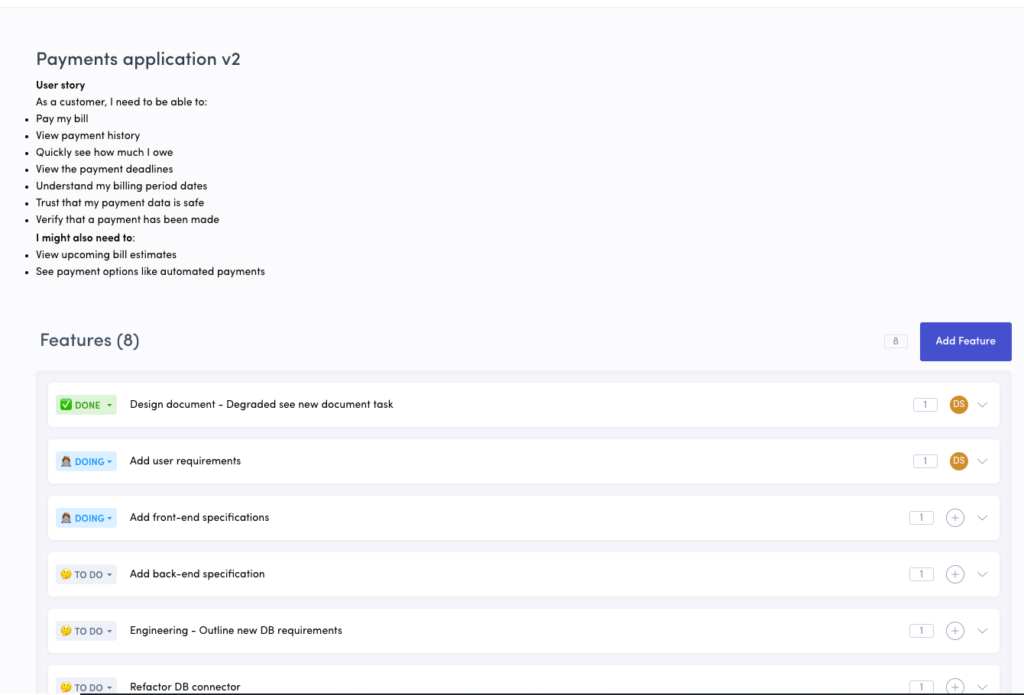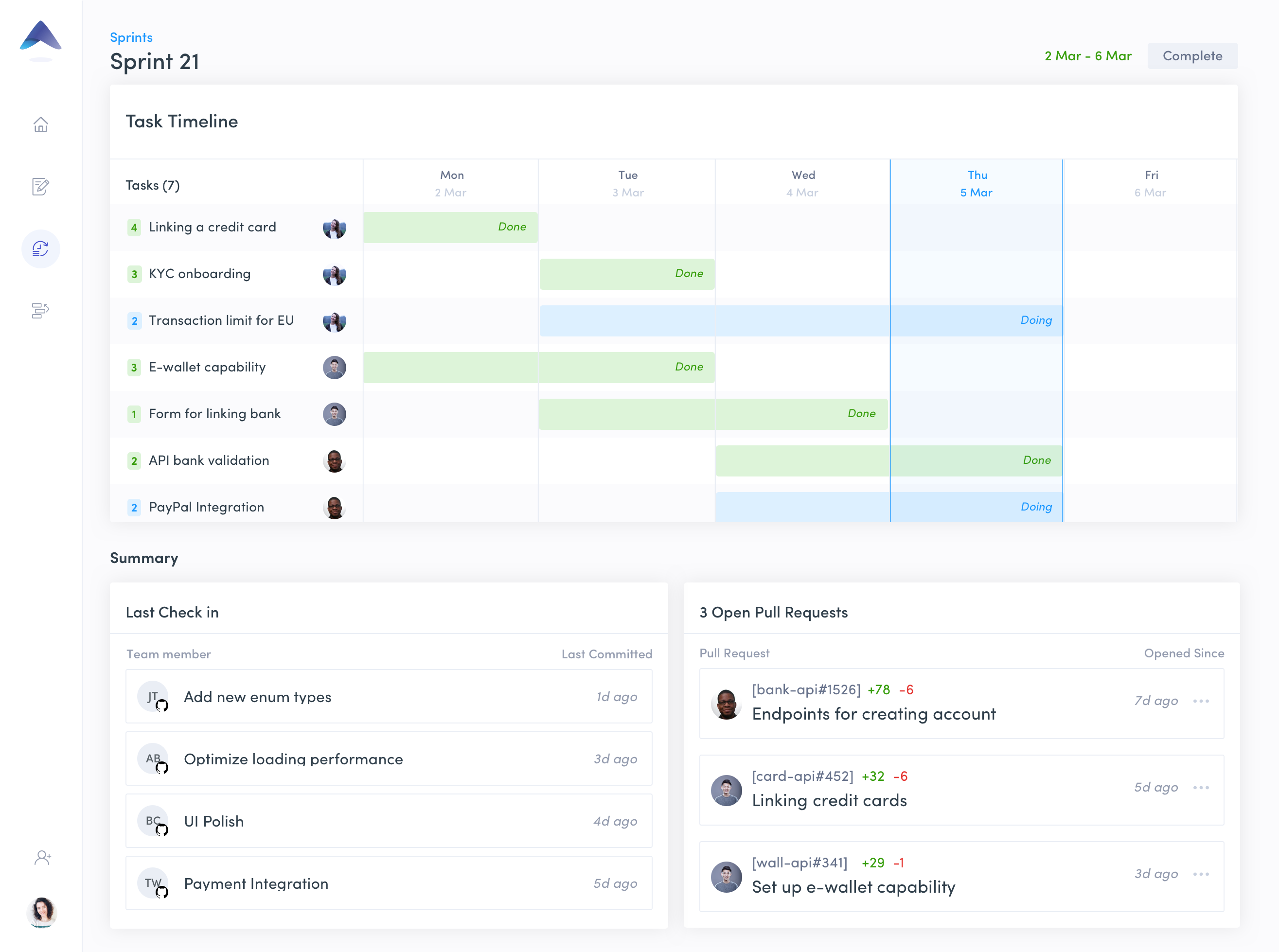How to Write Software Design Documents (SDD) | Template [2023]
Mục lục bài viết
How To Write Software Design Documents (Updated for 2023)
Are you using software design documents when building new products?
If you’re a product owner…
And you’re getting ready to start working with freelance web developers, or a full-fledged in-house engineering team. It’s essential to your project’s success that you become familiar with their importance.
Or, if you’re a developer…And you’re working directly with clients who don’t have a clear vision of what they want. Hopefully you already know how vital a role software design documents (SDDs) play.
When we’re talking about an independent developer, it’s important to understand that one of the most unsettling changes in their day-to-day work, is that they’re no longer simply getting directions from an employer. Now it’s up to the developer to handle all the responsibilities that were once distributed between expert-testing, program management, etc. And now they’re working directly with the client, who may not have any working knowledge of how to properly scope out the build of a new product.
Hence, it’s nice when product owners do some of the leg work!
With that in mind, this article is geared towards Product Managers, Founders, Innovation Strategists, CIOs, and the like, who are looking to pull their own weight.
Getting Started with Software Design Documents (Free Template Below)
Keep in mind, no matter how skilled a developer may be, this relationship is a much larger challenge. And well-structured software design documents can save you days, or even weeks of wasted time. The goal of software design documents is to assure that everyone is on the same page, and that we can help both parties build great products and innovate in record time.
So let’s wrap our heads around what software design documents are all about…
In this article, you’ll learn:
- The importance of clear communication between product owner and developer.
- Why software design documents are so important.
- What should be included in software design documents.
- A software design documents example.
- A software design document template (editable).
🚀 We’d love to learn more about your team and the challenges in your current workflow. Let’s chat!
Communication Between Product Managers and Developers

Image Source
Being able to effectively communicate with programmers and developers is paramount to your project’s success.
You’re probably saying, “Well duh!” …..And that’s fair…But do you have a solid framework in place to do so? Yes? No? Maybe?
If you’re a product owner that’s building a new mobile app, have you thought about how to effectively communicate with developers, or how you’ll manage that relationship? What we definitely know is that a few video chats per month is a recipe for disaster.
Back and forth emails with screenshots and wireframes is getting closer to a solution, but still not even close to a real structure. Product owners and developers must be in contact with each other at every stage of the project.
And they must have clear cut goals and objectives throughout the project.
Again, maybe that goes unsaid…
However, the point is with just the basics, developers will only get a general idea of what the software is meant to do, look and feel, and how it flows. And if you’re writing an application based on even slightly vague descriptions, you have little to no chance of being satisfied with the results.
Even at companies in the software business, where a team is centrally located, shares a culture and speaks the same language…It’s still extremely rare for the team to produce what it set out to create within a reasonable timeframe.
In fact, less than 1/3 of projects were completed on time, on budget last year (Source: Standish Group).
This is where software design documents bring much needed structure to your project, and why they help get your project done on time.
“Less than one third of projects were completed on time, on budget last year.”
Why You Need Software Design Documents
First of all, you need to come prepared to any professional project with a detailed framework, right?
Nobody builds skyscrapers by just winging it. So why wouldn’t this be just as true when it comes to building web software and mobile applications?
This is a huge piece of the puzzle when it comes to effectively communicating between product managers and developers.
Prior to even opening an IDE (Integrated Development Environment) – whether that’s Xcode, React.js or Visual Studio – you and the developer should have clear, agreed upon goals and objectives. These goals and objectives should be established in a specification document.
Ideally, it would be nice if product owners had already written one, but in the likely scenario where they haven’t, developers should have one and send it to their client to review. However, as the product owner, you should be aware that this is a good opportunity for the developer, at the introductory stage of a project, to learn whether or not they’re about to work with a nightmare client.
Here’s what I mean by that…
If a developer sends a specification document to their client and the client’s response is…
“We don’t have time for design documents”
This is the developer’s chance to run the other direction. However, don’t worry, software design documents don’t have to be long. Just a few pages that lay out the user interface, wireframes if necessary, and a list of completion milestones are all you need.
That is, at least at a bare minimum.
So if you run into this problem, or if you still don’t see the need for software design documents…
Here are some strong talking points:
What’s likely to happen without a software design document?
- Back and forth disputes over what was previously agreed upon.
- Misinterpretations due to classic business mind vs engineer mind language. And worst of all,
- Running into a situation where product owners need to ask developers to deliver, “What they really asked for”, without paying for the changes.
With software design documents however, you can expect…
- Ability to refer to the specification which the product owner agreed to and signed- off on.
- Making amendments and clarifications to the document as you go along.
- Product owner taking more responsibility for the quality of content in the document.
Products need to get to market faster with every day that passes, and neither party wants to run into any roadblocks. So let’s dive into what should be included in software design documents, followed by our sample SDD template…
What Should Be Included In Software Design Documents?

At a high level…
Software design documents should include:
- A description of the product.
- The scope of the work required for the project to be completed.
- And a list of milestones.
At a more detailed level however, let’s break down the specifics…
A. User Interface
The user interface component of a project is by far the most challenging section of the design document.
Even if the product owner sends clear illustrations created by a graphic designer, the graphic designer almost always is not also a strong programmer. Naturally, this will lead to communication issues.
So yes, do create those illustrations, but keep in mind that you’ll need to provide some additional context, which I’ll get to in a moment. The problem here is that the illustrations likely say little regarding…
- Animations
- Control states.
- What happens with a button when it needs to be unusable?
- How do you know if the button should be visible to the end user or not?
- Or how do you ideally want the end-user to navigate the application?
And this is a key example of how software design documents, like software test cases, are a valuable time saver. Prior to a developer writing any code behind the illustrations, you need to have all such questions answered.
But first, you need to create those illustrations…
Wireframing Tools
You might be asking, “Okay, but what if I don’t have a graphic designer?”
Not to worry…
You can create some clean illustrations using one of many different wireframing tools, and put together a complete set of screen layouts. This should include any variations that the views display in different application states. Just for the record, our favorite wireframing tool is Invision. They’re awesome 🙂
And if you’re working on a dual application that needs to be compatible across different devices and screen sizes, be sure to create separate wireframes for each device.
Yes, this is a pain in the _______. 🙂
But weigh the cost of having to rewrite hours worth of code and constantly changing the UI, with how long it’ll take one of you to create these screen layouts.
So, to avoid miscommunication that could turn a three week project into a three month project…
Take the time in the beginning stages to get the UI design right!
Don’t presume anything, and ask each other lots of questions.
B. Requirements / System Overview
In the requirements section of your application design document, you’ll provide a general description of the functionality, context and design of the project.
To help your developer(s) better understand your application, you’ll answer questions such as:
- “What’s the main purpose of the application?” And,
- “What are the possible failure scenarios and conditions?”
The point here is for the product owner to answer these open ended questions as well as they can, and then for the developer to ask follow up questions once they receive the answers. As a result, you will dramatically reduce the risk of miscommunication and the need to write additional code.
C. Milestones
Setting clear milestones for your design document template is key to fully understanding the scope of your project.
Whether it’s the developer or the product owner that sets these milestones, they should be as unambiguous as possible, and agreed upon one-by-one by both parties.
Milestones can be in the form of functionalities and / or components, or possibly in the form of independent applications should the job description include a full suite of deliverables. At a minimum, milestones should provide a clear metric toward completion.
One tip for setting milestones: Try to keep them as similar in duration as possible.
If you need help with developing a project scope, check out this blog post: What Are Project Scopes | Free Project Scope Template
View GitHub insights, identify blockers, and deliver with predictability.
Schedule a free demo
Gain visibility, from requirement to release.

Software Design Document Template
Okay, now for the part you all quite possibly skipped to before reading everything else, which I of course do not recommend!
This is the software design document template we’ve carefully constructed here at Tara AI. However, note that you’ll want the context provided in this article to properly fill out the template.
I. Goals & Vision
Here, all you’re doing is providing a description of the project and the purpose of the SDD.
This should include items such as, who the intended audience is, and what the overall goal of the project will be.
For example: Create a minimum viable product mobile application for iOS and Android.
Section 1: Business Goals

Section 2: Business Needs

II. Requirements / System Overview
The system overview is broken up into two sections:
- User Requirements, and
- Functional Requirements
Section 1: User Requirements

Section 2: Functional Requirements

Under the User Requirements section, you may have noticed that we highly recommend taking advantage of a powerful exercise, which is creating user stories.
If you want to learn more about user story mapping, here’s a quick guide to help you get started.
Additionally, here are some more questions you might consider answering in the System Overview section:
- What’s the main purpose of the application? How quickly does it do it?
- What are the possible failure scenarios and conditions? How should they be handled?
- What one-time operations are performed at first execution, such as right after installation?
- If the user creates entries of any kind (e.g., bookmarks), what limitations are there?
III. User Interface
For the UI section of your software design specification, you’ll want to include wireframes for each page, with detailed descriptions of the following…
- Each control, including states (enabled/disabled/highlighted) and operations.
- Supported orientations and transitions among them.
- Functionality that’s being represented.
- Error handling.
- Dimensions and constraints.
These are some wireframe examples for an iOS application, which accurately portray what this should look like…

Furthermore, here’s the post from JustInMind (another wireframing tool), that I took that wireframe image from: 10 Inspiring Web and Mobile Wireframing Examples
Lastly, If you’re not familiar with wireframing tools, here’s a video on how to get started with a tool like Invision:
IV. Milestones and Prioritization
There’s a good quote that we at Tara AI like to remind ourselves of, which reads:
“If you’re not embarrassed by the first version of your product, you’ve launched too late.”
Hence, this is where prioritization and setting realistic milestones for your product come into play…
Section 1: Milestones
As described above, the milestones section should include deadlines for completion and expected deliverables.
For example, the milestones section in your software design document template might look like:
- Facade application showing screen with temporary transitions and example images / text.
- Communication protocol: application connects to network / server
- Functional milestone #1: __________
- Alpha application (with full functionality)
- Stability and optimization
- Release beta
Section 2: Prioritization
The way your product feels and looks is just as important as what it does. However, you must prioritize the basic functionalities needed to build your MVP. So, we use a prioritization matrix to help with that. Here’s what that looks like…

Prioritizing features and user stories will help you identify the basic functionalities needed to build your MVP. Use the prioritization matrix above as your framework and make a list of your priorities broken into the four quadrants
- Include in MVP
- Revisit
- Don’t Include in MVP
- Debate
“If you’re not embarrassed by the first version of your product, you’ve launched too late.”
– Reid Hoffman, LinkedIn
Software Design Documents – Article Overview
By now, you should have everything you need to start writing a professional software design document.
We’ve covered:
- Why it’s absolutely necessary to write software design documents.
- How to effectively communicate with developers.
- What should be included in software design documents. And,
- Provided a software design document template for you to get started with.
You’ll want to make this template your own over time by applying necessary adjustments based on the type of project you’re working on.
Next Steps
Now that you have developed your software design documents and are ready to kickstart the development process, what’s next?
This is where we, Tara AI, come into play.
Our platform creates a unified view of everything your team needs for software development, from user stories, project specifications, requirement documents down to the most granular project tasks. Say goodbye to operational silos.

We also offer an insight-driven sprint view that enables your team to seamlessly assign tasks, track effort, and visualize the scope of your development.
Welcome to the future of software development!

If you are wondering what a “sprint” is, we got you covered: Scrum Framework in Agile Project Management.











